|
|
| |
|
|
| |
|
|
|
|
| |
 Travel
America Travel
America
Learn before you travel. This section of Fun Easy
English focuses on facts and other cool stuff about
your favorite U.S. state. This is great English
reading practice. This page focuses on the state of
Delaware. |
 Hey
if you cannot understand something on this page, Hey
if you cannot understand something on this page,
then use the Fun Easy English
dictionary
(opens in a new window) |
|
|
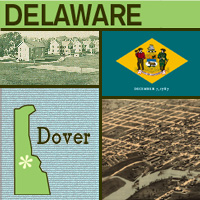 Delaware Delaware
With the state motto of "Liberty and Independence,"
it's no surprise that Delaware was the first of the
original 13 states of the Union; it's often called
the "First" or "Diamond State." The state's name
comes from the original governor of Virginia, Thomas
West, Lord De La Warr. William Penn acquired the
land that makes up Delaware to keep his Pennsylvania
colony from being landlocked. Today, Delaware is one
of the most industrialized states, known for its
chemical research. Dover is the capital; the state
flower is the peach blossom. |
|
Delaware
State Flag
The state flag of Delaware was adopted in 1913.
The colonial blue and buff represent the colors of General
George Washington's uniform. "December 7, 1787" is the day
Delaware ratified the federal Constitution - becoming the
first state of the union.
Inside the buff diamond is the state coat of arms (first
adopted in 1777 and also featured on the state seal), which
contains many symbols of Delaware:
Ship: a symbol of Delaware's ship building industry and
extensive coastal commerce.
Farmer: represents the central role of farming to the state
of Delaware.
Militiaman: recognizes the crucial role of the
citizen-soldier to the maintenance of American liberties.
Wheat Sheaf; a symbol of the agricultural vitality of
Delaware.
Maize (Indian Corn): symbolizes the agricultural basis of
Delaware's economy.
Water: represents the Delaware River, the state's main
artery of commerce and transportation.
Ox; signifies the importance of animal husbandry to
Delaware's state economy.
Motto: "Liberty and Independence" was approved in 1847. |
|
Source:
State Symbols USA |
|
|
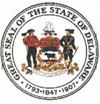 Delaware
State Facts Delaware
State Facts
Picture: state seal of Delaware |
|
State Capital |
Dover |
|
Nickname |
First State / Diamond State |
|
Motto |
Liberty and Independence |
|
Statehood |
Dec. 7, 1787 (1st) |
|
Origin of Name |
Named after Lord De La Warr, an early Virginia
governor. |
|
Largest Cities |
Wilmington, Dover, Newark, Bethany, Milton |
|
Border States |
Maryland, New Jersey, Pennsylvania |
|
Area |
1,955 sq. mi.; 49th largest |
|
State Bird |
Blue Hen Chicken |
|
State Flower |
Peach Blossom |
|
State Tree |
American Holly (ilex opaca) |
|
State Song |
Our Delaware |
 Travel and tourism
site for Delaware - This state travel and territorial
tourism site provides ideas for your vacations, meetings, and more. Travel and tourism
site for Delaware - This state travel and territorial
tourism site provides ideas for your vacations, meetings, and more. |
|
|
Delaware Stories |
|
|
Return Day
Do you know what "to bury the hatchet" means? Did you know this
phrase came from politics?
In 1791, an unusual Sussex County, Delaware, tradition started. Back
then the law required that all votes had to be cast in Georgetown,
the county seat. Voters would arrive from all over the county, cast
their ballots, then go home while the votes were counted. Two days
later, the voters and politicians would return to Georgetown to find
out the election results. The day the results were in and all the
people returned was called "Return Day."
Of course the winners had reason to celebrate, but over the years
Return Day became both a time to celebrate and a time to heal
political differences. Today, votes in an election are usually known
soon after the polls close, but this tradition continues. Part of
the ceremony includes a symbolic "burying of the hatchet," following
an old Native American tradition. Rival politicians together bury a
ceremonial hatchet in the sand to show that it is the end of the
political race and the end of any hard feelings the candidates may
have had about each other during the campaign.
The next time you are angry with someone, why not just bury the
hatchet? |
|
|
St. Anthony of Padua Feast Day Procession
Have you ever lost something and really wanted to find it? Next time
that happens, you might try asking St. Anthony for help. For Italian
Catholics, St. Anthony of Padua is the patron saint of lost things.
The faithful pray to him and hope that whatever they have lost will
be found.
The Italian American people of Wilmington, Delaware, celebrate St.
Anthony and 11 other saints with the St. Anthony of Padua Feast Day
Procession. This annual religious procession, which celebrated its
75th anniversary in 2000, is a reminder of their Italian heritage
and faith. Traditionally, such festivals were held in Italian towns
celebrating the local patron saint. In 1925, a church in Wilmington
held a procession to honor St. Anthony. Over the years, the festival
expanded to include 11 other saints and has become an eight- day
celebration.
In the procession, statues of all 12 saints are paraded through the
streets, joined by religious leaders, government officials, people
dressed in Italian folk costumes, bands, and others. |
|
|
Delaware Saengerbund Oktoberfest
What do you think the children in the photo are doing? They are
doing a German-style dance in traditional costumes.
Every year, Oktoberfest is celebrated in Delaware by the Delaware
Saengerbund. The original Oktoberfest celebration began in a part of
Germany called Bavaria in 1810. In October of that year the crown
prince Ludwig married Princess Theresia, and the public was invited
to the wedding celebration. It became an annual event, and today
Oktoberfests are held all over the world.
The Delaware Saengerbund is a German-American singing and social
club that was started in the mid-1800s for German immigrants who had
come to America. It was a way for people to share their culture in
their newly adopted country. The Delaware celebration of Oktoberfest
is three days of German singing, dancing, music and, of course,
eating.
Unlike most Oktoberfests, which are held in October, the one in
Delaware is held in September. Can you guess why? Because the
weather is warmer then! |
|
|
Holy Trinity Greek Festival
Do you like to try food from other cultures?
A great place to try new foods is at fairs or festivals. The Holy
Trinity Greek Festival in Wilmington, Delaware, is held over four
days each June. The festival began as a Christmas bazaar by the
Piloptochos Society, a Greek women's organization, to sell crafts
and gifts. In this way it was similar to many other events, but the
one big surprise was that the Greek pastries were the most popular
attraction. So, the next year they added more Greek food to the
bazaar. Soon the food was the main attraction!
The organizers decided to move the event to the springtime and
turned it into a festival with the focus on Greek food, dancing, and
culture. The event has the feel of an authentic Greek village
festival with performances by local dancers dressed up in Greek
regional costumes. Maybe you can go to a Greek festival someday and
you will be able to say, "Diaskeda'same Poli'!" (We had a lot of
fun). |
|
|
American Art in Delaware
You have probably heard of the DuPont Company, which was founded by
a family of the same name. But do you know about the museum that one
of the family members began?
Henry Francis du Pont (1880-1969) was an heir to Delaware's DuPont
Company fortune. He was one of the first serious collectors of
American decorative art objects --furniture, textiles, paintings,
and other objects made in the United States between 1640 and 1840.
American furniture and household objects had been considered
inferior to those from Europe. But du Pont helped develop a new
appreciation for American decorative arts. He created a legendary
showplace for these objects on his family's estate just outside of
Wilmington, Delaware. In 1951 it was opened to the public as the
Henry Francis du Pont Winterthur (pronounced winter-tour) Museum.
Du Pont assembled objects from his collection into 175 "period
rooms," each with examples of American antiques and decorative arts
that followed a certain theme or period in early American history.
For example, the du Pont Dining Room has furniture dating from the
late 18th and early 19th centuries. And, because this was the time
when the United States became a new nation, there is a patriotic
theme in the room. Another example is the Chinese Parlor, which has
furnishings that reflect Americans' fascination with Asian culture
during the 18th century. In these period rooms du Pont believed he
could tell the story of the early United States through furniture
and other decorative arts. |
|
Source:
Library of Congress |
|
 Delaware Delaware
There are no national forests, parks, or
monuments in this state. |
|
|
|
|
|
|
|
|
|
|
|
|
Cool America |
 About the U.S.A. About the U.S.A.
About the U.S.A. is an American
Studies reader that examines the customs, government, and history of the
United States of America. The text provides a wealth of information on U.S.
geography and history; the roles of local, state, and federal government;
national holidays and symbols; the Constitution; and citizenship. The book,
which was written for intermediate to advanced learners of English, contains
a range of activities for language students to practice listening, speaking,
reading, and writing. (opens to a new PDF window)
Great English reading
practice. |
 About
America About
America
Learn about the fascinating history and government of
the United States of America. Lessons include content on
American Government, American History, and Integrated
Civics. Handouts with interactive games and
student-centered activities encompass all four language
skills: speaking, listening, reading, and writing.
Great English reading practice for
beginning to intermediate students. |
 American Teens Talk! American Teens Talk!
Americans Teens Talk! is a collection of interviews of
American high school students. Each interview is accompanied by vocabulary
notes and discussion questions. The interviews in American Teens Talk! give
learners a view into the lives of adolescents in the U.S. Through the
written format of the interviews, learners are able to increase their
vocabulary, practice their reading and listening skills, engage in
discussions, and learn more about U.S. culture. These
interviews come with audio programs.
Great English listening and
reading |
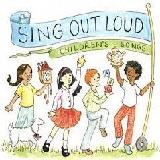 Sing Out Loud Children's Songs Sing Out Loud Children's Songs
Sing Out Loud Children's Songs includes popular children's songs in the U.S.A. Posters accompany the
individual Sing Out Loud Children's Songs. These
songs come with audio programs.
Great English listening and reading
practice. |
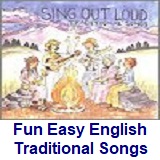 Sing Out Loud Traditional Songs Sing Out Loud Traditional Songs
The Sing Out Loud Traditional Songs
collection contains 13 traditional American folk songs and song lyrics.
Listen to the songs online, read the lyrics, and collect the posters that
accompany the songs. These
songs come with audio programs.
Great English listening and reading
practice. |
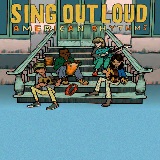 Sing Out Loud American Rhythms Sing Out Loud American Rhythms
Do you love music? Want to use it
to learn English? Check out the hip-hop inspired song "Peace" from Sing Out
Loud American Rhythms. American Rhythms includes a variety of musical genres
from many different artists in the U.S.A. These songs will appeal to teens
and young adults. These
songs come with audio programs.
Great English listening and reading
practice. |
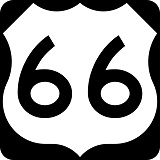 Route
66 - Famous American Road Route
66 - Famous American Road
U.S. Route 66 (US 66 or Route 66), also known as the Will Rogers Highway, the
Main Street of America or the Mother Road, was one of the original highways in
the U.S. Highway System. The highway, which became one of the most famous roads
in the United States, originally ran from Chicago, Illinois, through Missouri,
Kansas, Oklahoma, Texas, New Mexico, and Arizona before ending in Santa Monica,
California, near Los Angeles, covering a total of 2,448 miles (3,940 km). It was
recognized in popular culture by both the hit song "(Get Your Kicks on) Route
66" and the Route 66 television show in the 1960s. |
Route 66: The Highway That's the Best
(Beginner - Listening)
A video lesson which shows you an interesting place in America.
The English is
spoken at 75% of normal speed.
Great English listening practice.
This video shows travel along Route 66, the most famous road in
America. |
Chicago: The Start of Route 66
(Beginner - Listening)
A video lesson which shows you an interesting place in America.
The English is
spoken at 75% of normal speed.
Great English listening practice.
This video shows travel along Route 66, the most famous road in
America. |
Going West for Decades on Route 66
(Beginner - Listening)
A video lesson which shows you an interesting place in America.
The English is
spoken at 75% of normal speed.
Great English listening practice.
This video shows travel along Route 66, the most famous road in
America. |
Arizona: The Spirit of Route 66
(Beginner - Listening)
A video lesson which shows you an interesting place in America.
The English is
spoken at 75% of normal speed.
Great English listening practice.
This video shows travel along Route 66, the most famous road in
America. |
Route 66 California: The End of the Trail
(Beginner - Listening)
A video lesson which shows you an interesting place in America.
The English is
spoken at 75% of normal speed.
Great English listening practice.
This video shows travel along Route 66, the most famous road in
America. |
Ten Must-See Route 66 Attractions
(Beginner - Listening)
A video lesson which shows you an interesting place in America.
The English is
spoken at 75% of normal speed.
Great English listening practice.
This video shows travel along Route 66, the most famous road in
America. |
Four Famous Foods On Route 66
(Beginner - Listening)
A video lesson which shows you an interesting place in America.
The English is
spoken at 75% of normal speed.
Great English listening practice.
This video shows travel along Route 66, the most famous road in
America. |
International Tourists Drawn to Route 66
(Beginner - Listening)
A video lesson which shows you an interesting place in America.
The English is
spoken at 75% of normal speed.
Great English listening practice.
This video shows travel along Route 66, the most famous road in
America. |
|
|
|
|
Search Fun Easy English |
|
|
|
|
|
|
|
|
|
|
|
|
|
|
|
About
Contact
Copyright
Resources
Site Map |